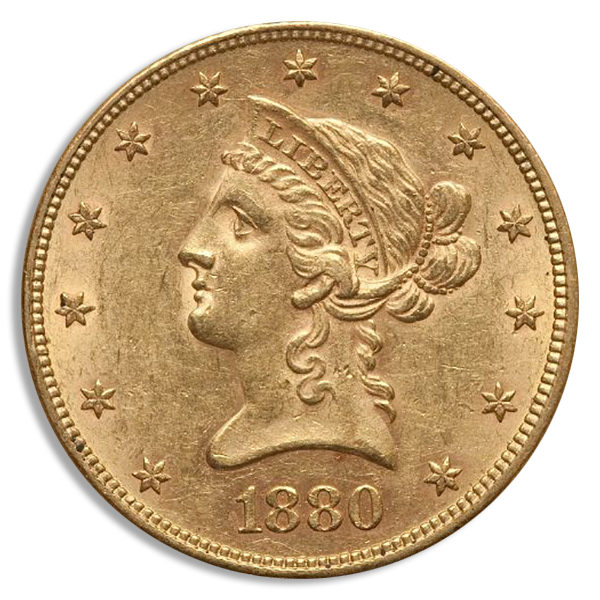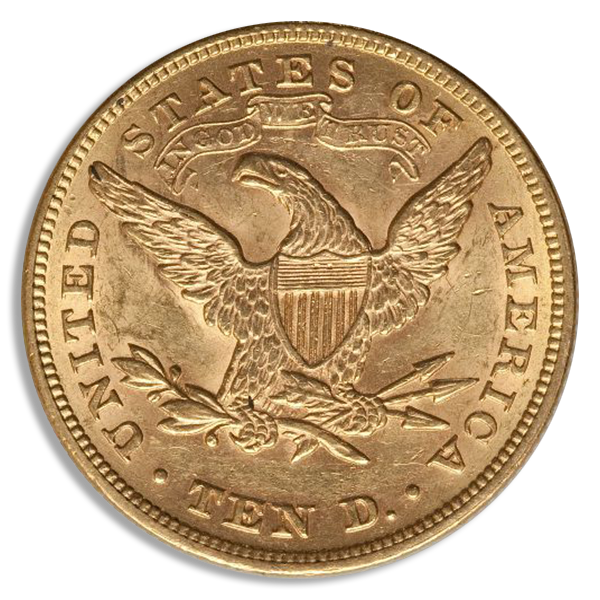$10 Liberty AU (Dates/Types Vary)





| The $10 Liberty Head Eagle gold coin holds a prominent place in American numismatic history. Introduced in 1838, this coin emerged from a turbulent economic backdrop shaped by fluctuating gold prices and shifting monetary policies. Designed by Christian Gobrecht, this iconic coin features a portrait of Liberty inspired by Benjamin West’s painting Omnia Vincit Amor (Love Conquers All). Liberty faces left, adorned with a coronet inscribed "LIBERTY." Her hair is knotted in the back with hanging curls, surrounded by thirteen stars, and the date is positioned below. The reverse showcases an eagle clutching an olive branch and arrows, encircled by the inscriptions "UNITED STATES OF AMERICA" and "TEN D." The coin's history dates back to a period when economic instability and a bi-metallic standard led to the suspension of gold coin production. In 1804, President Thomas Jefferson ordered the halt of eagle production due to the scarcity of gold and the unfavorable silver-to-gold ratio. This hiatus lasted until 1838, when Congress adjusted the content and fineness of U.S. gold coins, allowing them to circulate once again. Despite its reintroduction, the $10 Liberty Head Eagle faced limited demand in its early years. The economic depression of the Jacksonian era and the coin's high value, equivalent to a significant sum of goods, made it impractical for everyday use. Consequently, the mintages remained low, and these coins were not widely circulated. Production of the Liberty Head Eagle expanded over time, with coins minted in Philadelphia, New Orleans, San Francisco, Carson City, and Denver. Between 1838 and 1866, about 5.3 million business strikes and 400 proofs were produced. However, few survived the widespread meltings of the 1930s, making high-grade specimens rare today. Collectors often pursue specific mint marks or single high-grade examples for their collections, with complete sets being extremely challenging to assemble. For numismatists, the $10 Liberty Head Eagle is a fascinating piece of American history. Its design, economic context, and rarity make it a coveted item for collectors and investors alike. An almost/about uncirculated (AU) coin has wear on under 50% of the design and retains at least 50% of its luster. |
Comparison Chart







 Quick View
Quick View





